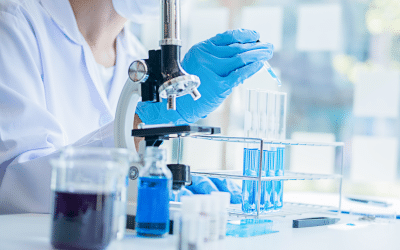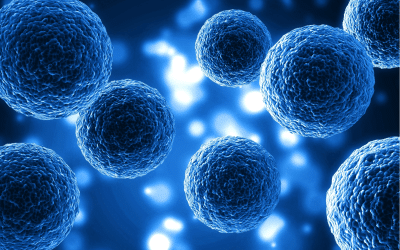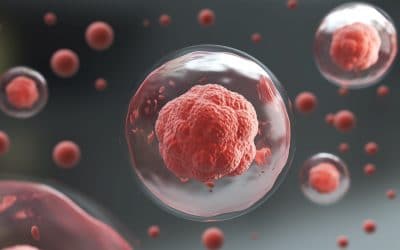The question of research on the human embryo started to emerge essentially for reasons associated with the existence of a stock of so-called “supernumerary” embryos. These supernumerary embryos were conceived in the context of medically assisted procreation (ART), and subsequently abandoned by the couples who produced them.
We are referring here to a very particular type of research, since it involves a human being at the very beginning of its life. To consider a human embryo as a research material like any other, thus poses serious ethical questions.
Table of contents:
I. Chronology of the laws regulating research on the human embryo
II. Definitions and different types of research
III. Specific framework regulating research on the human embryo
IV. Specific framework regulating research on embryonic stem cells
V. Specific framework regulating research on induced pluripotent stem cells
I. Chronology of the laws regulating research on the human embryo
The law regulating this research is ever changing at each revision of the bioethics law.
- 1994: Total prohibition of research on the human embryo
- 2004: Prohibition with dispensations for 5 years and subject to conditions
- 2011: Prohibition with dispensations with no time limit and subject to conditions
- 2013: Deletion of the prohibition principle
- 2021: Relaxation of many of the conditions
The first bioethics laws in 1994 logically introduced a total prohibition of all research on the human embryo. This rule had been asserted in line with the consequences of article 16 of the French Civil Code which establishes that “The law establishes the primacy of the person, and prohibits any assault on its dignity and guarantees the respect of the human being from the very beginning of its life”.
In fact, such prohibition established the recognition of the embryo as belonging to humanity, which already forbids it from being considered as a mere material for experimentation, but also recognises its human destiny. Consequently, destined to live and die like all human beings. This is what led the legislator to state that embryos could only be conceived in vitro with a view to being implanted in the mother’s uterus (in the context of medically assisted procreation).
The destiny of an embryo from a couple who no longer wished to foster it would therefore be limited to one of two options: live (by being donated to another couple) and failing that, to die (its preservation being terminated).
That is also the reason why it is prohibited to create embryos specifically for research.
The humanity of the embryo was reasserted by the legislator in the 2004 and 2011 bioethics laws even if the prohibition on research was already diminished by temporary dispensation exceptions. Since 2013, the principle of prohibition of research on the human embryo has been deleted. Finally, in 2021, the bioethics law considerably reduced the protection due to the human embryo by facilitating its availability and its exploitation.
Currently in France, some 80 teams of research scientists are authorised to conduct such research. Around twenty research programmes are being conducted on human embryonic stem cells (hESC), and 8 research programmes have been authorised on the human embryo. (Of those 8, only 2 are subsequent to the 2021 law.)
II. Definitions and different types of research
It should be noted that prior to 2021, embryonic stem cells were subject to the same legal restrictions as embryos, which was logical, since they are taken from embryos. But the law dated 2nd August 2021 afforded them a specific legal framework, considerably facilitating their access and relaxing the measures governing the research protocols.
It is now possible to distinguish several types of research within that legal framework:
- Research on the human embryo as such
- Research on embryonic stem cells, taken from a human embryo
- Research on “induced” pluripotent stem cells, so-called IPS.
Note that within these different categories:
- The human embryo is always obtained by ART. The embryos may be made available for research in 2 cases: either because they are no longer part of any “parental project”, to use the official term, or because following embryonic selection (following a preimplantation diagnosis), it is decided not to implant them.
- Human embryonic stem cells (hESC). These cells are sourced directly from the embryo and are taken at a very early stage of its development. These cells are of particular interest for research scientists and industry because they have the ability to multiply ad infinitum and also to specialise into most types of cells of the human organism (this is known as pluripotency).
- When a human embryo is subject to research or used as a source of cells in the context of a research programme, it is invariably destroyed.
- IPS (Induced Pluripotent Stem cells): these are stem cells induced artificially from differentiated adult cells, into which four pluripotent genes are introduced. This manipulation – known as “reprogramming” – gives them an ability to differentiate into any type of cells and to multiply ad infinitum. All the cells which proliferate may be used to generate IPS cells. Those most commonly used are blood and skin cells.
Now that the different types of research and cells have been clarified, we shall explain the specific legal framework surrounding each type. Since the 2021 Bioethics Law, this is the current situation:
III. Specific framework regulating research on the human embryo
A. The research is subject to authorisation from the French Biomedicine Agency
B. So-called “scientific” conditions:
- 2021 Law: “Scientific pertinence must be established”. This criterion is rather vague, and is often relaxed. Without being scientifically necessary, the research must not be whimsical.
- 2021 Law: Requirement for a “medical purpose or aiming to improve knowledge of human biology”.
This criterion has constantly been relaxed over the years.
In 2004, the research had to enable “major therapeutic progress”. (Which could not be achieved by alternative methods); in 2011, the law merely required the research to allow “major medical progress” (a relaxation intended to facilitate fundamental research).
In 2013, the research on the human embryo had to have a simple “medical purpose”. Now, this may simply be an aim to improve the knowledge of human biology, which is extremely vast and fails to guarantee respect for ethical criteria.
- 2021: The law merely demands that “in the current state of scientific knowledge, the research cannot be conducted without resorting to human embryos”
When the dispensation regime extended research to the human embryo, it was conditional on a demonstration of the absence of any alternative method of comparable effectiveness. This criterion has since been relaxed. Already in 2013, the law had deleted the intention of the preference for alternative methods.
C. Special measures:
- Their development in vitro is terminated no later than the fourteenth day of growth.
- The conception of embryos is possible only in the context of ART (medically assisted procreation). It is prohibited to conceive embryos for the sole purpose of donating them to research.
- The embryos on which research has been conducted cannot be transferred for gestation purposes. They are destroyed.
- Free of charge: The embryos are given up without any financial compensation. The supply of embryos for financial gain is prohibited.
- Consent: (of the couple, surviving member or woman).
- It must be reiterated within 3 months and is revocable providing no research has taken place. Since the 2021 law: The information on the other possibilities authorised by the law is no longer mandatory (donation to a couple, termination of preservation etc.)
- Anonymity: No information liable to identify the embryo originating couple can be communicated to the research team.
- The article specifying that “The creation of transgender or chimerical embryos is prohibited” was deleted by the 2021 law.
Concerning transgender (genetically modified) embryos, this article is replaced by: “The in vitro conception of human embryos by the fusion of gametes or constitution by cloning of human embryos for research purposes is prohibited”. (L.2151-2 and Art.18 Oviedo convention). The wording has therefore changed. The words “by the fusion of gametes” (which corresponds quite simply to the natural fertilisation phenomenon, between an oocyte and a sperm) have been introduced.
As a result, “embryos” created by other procedures are not concerned by this prohibition. This opening is intended in particular to avoid preventing research on “embryo models”.
For “chimera” (mixed embryos between human and other species), the 2021 law states that: “The modification of a human embryo by the addition of cells coming from other species is prohibited”. The converse is therefore no longer prohibited: It is possible to integrate human cells (in particular embryonic cells, but also IPS cells) within embryos of other species.
IV. Specific context of research on human embryonic stem cells (hESC)
This research is subject to declaration to the French Agency of Biomedicine (ABM).
The Managing Director of the ABM may oppose the declaration.
A. Special measures
- The hESC must derive from embryos resulting from an authorised research protocol or an hESC subject to an importation authorisation.
- The gametes obtained by hESC (i.e. by the transformation of the hESC into oocytes or sperm) can under no circumstances be used to fertilise another gamete, obtained through the same process or from a donation.
- Special case. If the protocol concerned is aimed at the differentiation of the hESC into gametes, the obtention of embryonic development models or the insertion of hESC in an animal embryo for the purpose of a transfer to an animal, the ABM Managing Director may oppose it, on the public advice of the ABM orientation council. In the absence of opposition by the Managing Director of the agency, the execution of the research protocol may begin.
B. So-called “scientific” conditions
- The “scientific pertinence must be established”
- The research must be part of a “medical purpose or for the improvement of knowledge of human biology”. This extremely broad criterion is therefore not very restrictive.
Conscience clause:
Whether for the purpose of research or for the exploitation of embryos or embryonic cells: “No research worker, engineer, technician or research assistant whatsoever, no doctor or medical assistant can be obliged to participate in any way in the research on human embryos or embryonic stem cells authorised in application of article L2151-5”.
V. Specific context of research on induced pluripotent stem cells (IPS)
Such research is subject to a declaration to the Agency of Biomedicine.
If the protocol concerned is aimed at the differentiation into gametes, the obtention of embryonic development models or the insertion into an animal embryo with the intention of a transfer to an animal, such specific research is subject to a declaration to the ABM.
The IPS cells, which do not involve sacrificing human embryos for their development, have often been put forward as a possible alternative to the use of embryonic cells. In reality, these two types of cells are not identical, in particular because IPS cells retain a “trace” of the changes introduced during reprogramming. Therefore, when protocols are conducted using IPS cells, quite often these protocols result in the use of hESC, which are recognised as being the “norm” against which results should be compared.
Research scientists refer to hESC as a “gold standard”. Among the ethical challenges inherent in IPS cells, is the consent by the person who donated the cells, in particular concerning the future usage which could be attributed to these specific cells, inasmuch as their differentiation into gametes or their insertion into an animal embryo (chimera) are not prohibited by the Bioethics Law.
VI. What becomes of the so-called “supernumerary” embryos?
Both members of the couple or the single woman whose embryos are preserved are consulted each year to know whether they wish to retain their “parental project”. If they confirm in writing the retention of their parental project, the preservation of their embryos is maintained. If they no longer have any “parental project”, both members of the couple or the single woman may consent (three months decision period):
- For the embryo or embryos to be donated to another couple or another woman;
- For the embryos to be donated to research;
- For the cells derived from such embryos to be part of a cellular therapy preparation or an innovative therapy medicine for exclusively therapeutic purposes;
- For their in vitro development to be terminated, (ending of cryogenic preservation) which leads to their destruction.
The absence of consent revocation within 3 months is considered as confirmation. For research or the derivation of cells for a cellular therapy preparation, the consent is revocable as long as the embryo is still intact. Their in vitro development is terminated and they are therefore destroyed:
- In the absence of any response for at least five years, from the date when the said consent was confirmed;
- In the event of disagreement between the members of the couple;
- In the event of death of one or both members of the couple, in the absence of consent for them to be donated to other couples or for research.



